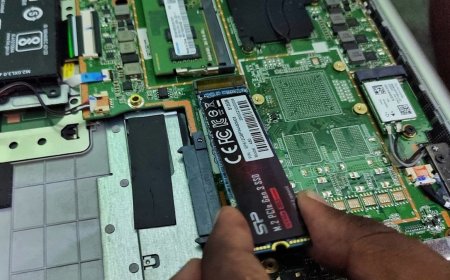How Can You Build Smart Contracts That Are Secure and Gas-Efficient?
Discover best practices to develop smart contracts that are both secure and optimized for low gas fees in 2025.

Smart contracts are the backbone of decentralized applications (dApps), enabling autonomous, tamper-proof execution of logic on blockchain networks. However, poorly written smart contracts can expose users to massive financial losses, security vulnerabilities, and inefficient gas usage. As Ethereum gas fees remain a critical consideration, developers must prioritize bothsecurity and gas optimization when designing smart contracts.This blog serves as a comprehensive guide to help you build secure and gas-efficient smart contracts development. We'll explore design principles, coding best practices, optimization strategies, testing methodologies, and tooling that will aid in producing robust, cost-effective contracts suitable for real-world applications.
Security must be a top priority from the beginning of smart contract development.
-
Immutability: Once deployed, contracts cannot be changed. Design with future-proofing in mind.
-
Public Visibility: All contract data and functions are public unless explicitly restricted.
-
Attack Surface: Any function can be a potential vulnerability; think like an attacker.
Common Vulnerabilities to Avoid:
-
Reentrancy attacks
-
Integer overflows/underflows (solved with SafeMath or built-in checks in Solidity >=0.8)
-
Front-running and MEV (Miner Extractable Value)
-
Denial of service
-
Access control issues
Ethereum users pay gas to execute transactions. Optimizing smart contracts can reduce costs and enhance UX.
-
Storage Access: Reading/writing to storage is expensive; use memory or calldata when possible.
-
Function Execution: Minimize the number of expensive operations per function.
-
Looping: Avoid unbounded loops to reduce unpredictable gas usage.
-
Struct Packing: Combine smaller data types to fit within a single storage slot.
-
Minimize External Calls: External calls increase complexity and gas costs.
-
Use Established Libraries: Rely on audited libraries like OpenZeppelin.
-
Check for Overflows/Underflows: Solidity 0.8+ handles this natively.
-
Use
requireandassertProperly:-
require()for input validations. -
assert()for internal error checks.
-
-
Restrict Access: Implement
onlyOwner,onlyAdmin, or custom modifiers. -
Fail Gracefully: Always handle errors to avoid stuck transactions or assets.
-
Minimize Privileges: Adhere to the principle of least privilege.
-
Use
uint256instead of smaller types unless packing -
Short-Circuit Logic: Place cheaper expressions first in conditionals.
-
Avoid Redundant Computations: Store reusable computations in variables.
-
Set Constants and Immutables: Saves gas and improves readability.
-
Tight Packing in Structs:
struct Packed {
uint128 a;
uint128 b;
} // stored in a single 256-bit slot-
Mapping over Arrays: Cheaper lookup and insertion.
-
EnumerableSet / EnumerableMap: Provides iteration with some overhead; evaluate if needed.
-
Bloom Filters and Bitmaps: Efficient for existence checks.
-
Proxy Pattern: Common in OpenZeppelin contracts.
-
UUPS (Universal Upgradeable Proxy Standard): More gas-efficient than legacy proxies.
-
Caveat: Adds complexity and security risks; thorough testing is essential.
-
Use Checks-Effects-Interactions Pattern:
function withdraw() public {
uint amount = balances[msg.sender];
require(amount > 0);
balances[msg.sender] = 0; // Effects
(bool success, ) = msg.sender.call{value: amount}(""); // Interaction
require(success);
}-
Use
ReentrancyGuardfrom OpenZeppelin for additional safety.
-
Mark everything explicitly:
public,external,internal,private -
Restrict administrative functions: Use
Ownable,AccessControlfor role-based permissions.
-
Automated Testing: Use tools like Hardhat, Truffle, or Foundry for unit/integration tests.
-
Formal Verification: Verify correctness mathematically with Certora, Manticore.
-
Static Analysis Tools:
-
Slither: Detects vulnerabilities, gas inefficiencies.
-
MythX / Mythril: Deep vulnerability scanning.
-
Echidna: Property-based fuzzing.
-
-
Hardhat Gas Reporter: Integrate with Mocha/Chai tests.
-
Tenderly: Simulate transactions, identify costly operations.
-
Remix IDE: In-browser gas estimates during compilation.
-
Solhint: Linter that enforces style and best practices.
-
Uniswap V3: Implements gas-efficient AMM design with custom assembly.
-
MakerDAO: Extensive use of governance, access controls, oracles.
-
Compound: Efficient storage and function design, minimal gas costs.
These blue-chip protocols demonstrate a balance between security, usability, and gas efficiency.
-
Use with caution: gains are minimal and risk is high.
-
Avoid unless absolutely necessary for performance-critical contracts.
-
Example:
assembly {
let x := mload(0x40)
mstore(x, 0x20)
}-
Minimize Contract Size: Keep under 24KB for Ethereum.
-
Use Libraries: Split logic using delegate calls.
-
Constructor Gas: Keep logic light in constructors.
-
Batch Transactions: Reduce gas by batching updates.
-
Admin-based upgrades: Require multi-signature control.
-
DAO-controlled: Decentralize upgrades with Snapshot + Gnosis Safe.
-
Emergency Stop Mechanism (Circuit Breaker): Helps in case of detected vulnerabilities.
Building secure and gas-optimized smart contracts is both an art and a science. It demands deep understanding of the Ethereum Virtual Machine (EVM), Solidity best practices, and attacker mindsets. By applying the principles and tools outlined above, developers can reduce attack vectors, enhance contract efficiency, and deliver seamless experiences for users. As blockchain technology continues to evolve, so too will the standards for performance and securitymaking continuous learning and tooling mastery essential for all smart contract developers.




























